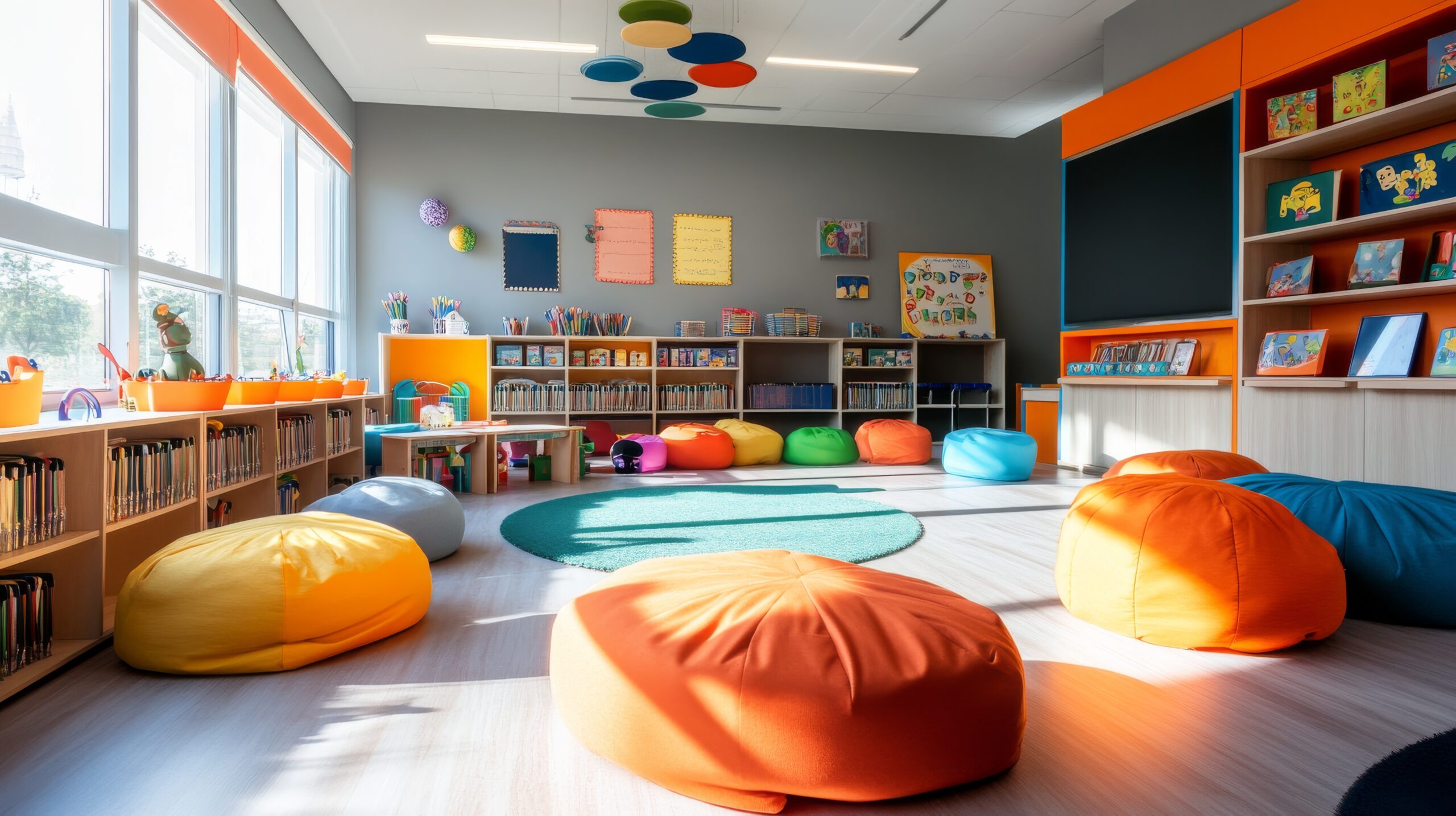Special education is a critical part of the educational system, providing tailored support to students with diverse learning needs. Central to this effort are special education teachers, whose roles extend beyond instruction to managing specialized environments like resource rooms. These spaces serve as a hub for individualized learning, where students can receive the attention and tools they need to succeed. In this blog, we’ll explore the role of special education teachers, the importance of resource rooms, and how to plan, manage, and enhance these environments to maximize student success.
Overview of the Role of Special Education Teachers
Special education teachers play a pivotal role in ensuring students with disabilities receive the education and support they deserve. They work with Individualized Education Plans (IEPs) and collaborate with general education teachers, administrators, and families. Their responsibilities include designing customized lessons, tracking progress, and providing emotional and behavioral support. In addition, they often manage resource rooms, which require a balance of academic rigor and emotional sensitivity.
Importance of a Well-Planned and Managed Resource Room
A well-organized and thoughtfully managed resource room is essential for fostering an environment conducive to learning for students with special needs. This room provides not just academic instruction but also behavioral, social, and emotional support tailored to each student’s IEP. With the right setup, the resource room becomes a haven for students who need specialized assistance, helping them feel safe, supported, and empowered to achieve their educational goals.
Defining a Resource Room as Both a Physical Space and a Specialized Educational Placement
A resource room functions both as a physical space and an instructional model within special education. As a placement, it offers a less restrictive alternative to self-contained classrooms, allowing students to split their time between general education and specialized instruction. Physically, the resource room is designed to accommodate various learning activities, sensory needs, and emotional regulation spaces. It serves as a transitional area, supporting students in their development of independence while providing the specialized help they need.
Understanding the Resource Room
What is a Resource Room?
A resource room is a designated classroom where special education students receive focused, small-group instruction. It offers a quieter, more controlled environment than a traditional classroom, making it ideal for students who benefit from individualized attention. Resource rooms provide instruction in core subjects such as math, reading, and writing, but they also serve as spaces for emotional regulation, social skill development, and the use of specialized teaching tools.
Differentiating Between Resource Rooms and Self-Contained Classrooms
While both resource rooms and self-contained classrooms cater to students with disabilities, they differ in structure and restrictiveness. In a self-contained classroom, students spend the majority of their day receiving specialized instruction separate from the general education population. In contrast, students in a resource room often split their time between general education classes and the resource room, depending on their specific needs as outlined in their IEP.
Legal Framework
IDEA (Individual with Disabilities Education Improvement Act) and the Least Restrictive Environment
The Individuals with Disabilities Education Improvement Act (IDEA) mandates that students with disabilities must be educated in the Least Restrictive Environment (LRE). This means that, whenever possible, students should be included in the general education setting with appropriate support. The resource room plays a vital role in this framework, offering a setting where students can receive specialized instruction without being completely removed from their peers.
Understanding the Concept of “Restrictiveness” and Its Implications
The concept of restrictiveness refers to how separated a student is from the general education environment. The more time a student spends outside of the general classroom, the more restrictive their placement is considered. A resource room is a less restrictive option compared to a self-contained classroom, allowing students to engage in the general curriculum while still receiving the support they need in specific areas.
Reviewing IEPs and Communicating with Parents
Importance of Understanding Each Student’s Individualized Education Plan (IEP)
The cornerstone of effective resource room management is a thorough understanding of each student’s IEP. These plans outline the specific accommodations, modifications, and goals tailored to the student’s needs. Teachers must review and refer to these documents regularly to ensure that the instruction and environment in the resource room are aligned with each student’s unique requirements.
Strategies for Effective Communication with Parents
Communication with parents is key to the success of any special education program. Parents provide crucial insights into their child’s needs, and ongoing dialogue helps ensure that both home and school environments support the student’s development. Teachers should hold regular meetings, send progress reports, and maintain open lines of communication to foster strong relationships with families.
Designing a Creative Learning Environment
Classroom Layout Considerations
The layout of the resource room should be designed to promote both learning and comfort. Desks should be arranged to allow easy movement and flexibility. Horseshoe-shaped tables can facilitate group activities, while individual desks offer personal space for focused tasks. Additionally, it’s important to ensure that students have access to quiet areas where they can retreat if they need a break or a calming environment.
Strategies for Creating an Inclusive and Welcoming Space
Inclusivity is key to a successful resource room. Decorate the space with student-friendly visuals, such as educational posters, student artwork, and growth charts. Use warm lighting, calming colors, and comfortable seating to create a welcoming atmosphere. Incorporating flexible seating arrangements, like bean bags or adjustable desks, can also help accommodate different learning styles and sensory needs.
Creating a Calming Space
Designing Areas for Emotional Regulation
Students with special needs often require emotional regulation strategies throughout the day. Incorporating a calming corner or quiet space in the resource room can provide students with a designated area to manage their emotions. This space should include soft seating, sensory tools (like stress balls or weighted blankets), and calming visuals to help students de-escalate when overwhelmed.
Tools and Techniques for Helping Students Regain Self-Control
In addition to creating a calming space, teachers can provide students with specific tools and techniques to regain self-control. These might include breathing exercises, mindfulness activities, or using visual timers to help students manage transitions. Encouraging students to use these tools independently promotes emotional resilience and self-regulation.
Managing the Daily Operations
Structuring the Day
A well-structured day helps students feel secure and understand what to expect. Begin with a welcoming greeting, followed by morning activities such as reviewing the daily schedule, a communication circle, or a group discussion. Throughout the day, students can engage in project-based learning and thematic lessons. Ending the day with a reflection session can help students process what they’ve learned and prepare for the next day.
Importance of Routine and Structure in Managing a Resource Room
Routine is particularly important in the resource room, where many students thrive on predictability. A consistent daily schedule can reduce anxiety, help with transitions, and promote focus. Teachers should post the schedule clearly and refer to it regularly to ensure that students feel secure in their learning environment.
Communication Circles and Morning Meetings
Strategies for Facilitating Student Engagement
Morning meetings or communication circles are excellent ways to build community and engage students in social-emotional learning. Teachers can use these sessions to check in with students, discuss the day’s activities, and encourage peer interaction. Incorporating interactive activities such as question rounds or group games can help facilitate participation.
Using Music, Big Books, and Interactive Activities to Foster Learning
Incorporating music and interactive activities during morning meetings is an effective way to engage students. Music can be a powerful tool for transitions, emotional regulation, or energizing the group. Using big books or oversized storybooks can make reading sessions more engaging, allowing students to participate in group storytelling or discussions.
Project Work and End-of-Day Reflections
Importance of Thematic Projects
Thematic projects allow students to explore topics in-depth and apply their learning in practical ways. These projects can be aligned with IEP goals and customized to meet the diverse needs of students in the resource room. Themes can range from science and history to social skills, fostering engagement and skill development.
How to Align Project Work with IEP Goals?
When planning projects, special education teachers should ensure that the activities align with students’ IEP goals. For example, if a student is working on improving reading comprehension, the teacher can incorporate reading assignments or storytelling into the project. Aligning these activities with IEP goals ensures that every task is meaningful and contributes to the student’s progress.
Enhancing Learning through Specialized Tools and Techniques
Strategy-Based Bulletin Boards and Learning Centers
Organizing Content Areas (Reading, Math, Writing)
Bulletin boards and learning centers can be powerful tools for organizing instructional content. Teachers can set up dedicated stations for subjects like reading, math, and writing, where students can rotate through different activities. These areas should include hands-on materials, visual aids, and interactive tasks that promote active engagement.
Importance of Visual Aids and Interactive Displays
Visual aids are essential for students with special needs, as they help reinforce concepts and provide structure. Teachers can use interactive displays, such as word walls or math problem boards, to engage students and encourage independent learning. These tools also support visual learners by providing clear, accessible information.
Sensory Support
Flexible Seating Arrangements and Sensory Baskets
Flexible seating allows students to choose how and where they learn best, whether that’s sitting on a yoga ball, a floor mat, or a traditional desk chair. Additionally, sensory baskets filled with items like fidget toys or tactile objects can help students regulate their sensory needs during the day.
Integrating Sensory Activities into Daily Routines
Incorporating sensory activities into the daily routine can help students stay focused and calm. These activities can include movement breaks, tactile learning tasks, or simple mindfulness exercises. By making sensory activities a regular part of the day, teachers can address students’ sensory needs proactively.
Technology Integration
Using Tools like Go Noodle for Brain Breaks
Technology can be a valuable tool in the resource room. Platforms like Go Noodle provide short, engaging videos that encourage movement and brain breaks. These can be especially helpful for students who need to release energy or refocus between lessons.
Incorporating Assistive Technology for Non-Verbal Communication
Assistive technology can open up new possibilities for students who struggle with verbal communication. Devices like communication boards, speech-generating apps, and text-to-speech software can empower non-verbal students to express themselves and participate more fully in classroom activities.
Teacher’s Role in the Resource Room
Working Closely with General Education Teachers and Paraprofessionals
Collaboration is key to the success of the resource room. Special education teachers must work closely with general education teachers to ensure that students’ IEP goals are supported in both settings. Paraprofessionals also play an important role in managing day-to-day activities and providing additional support in the resource room.
Strategies for Maintaining Effective Communication within the IEP Team
Regular communication between all members of the IEP team is crucial. Teachers should set up regular meetings to discuss student progress, share insights, and make adjustments to the instructional approach. Clear and consistent communication ensures that all team members are aligned in their efforts to support the student.
Instructional Design
Adapting Teaching Methods to Meet Diverse Learning Needs
Instructional design in the resource room must be flexible and adaptable. Teachers should use differentiated instruction, tailoring lessons to meet the varying needs of each student. This might involve modifying lesson plans, offering additional scaffolding, or using alternative teaching methods such as hands-on activities or visual aids.
Balancing One-on-One Instruction with Small Group Activities
A key challenge in the resource room is balancing individualized instruction with small group work. While one-on-one instruction is necessary for students with significant needs, group activities can foster peer interactions and build social skills. Teachers should structure the day to include both types of instruction, ensuring that students receive the support they need while also benefiting from collaborative learning.
Challenges and Best Practices
Avoiding the “Enabling” Trap and Fostering Student Independence
One challenge in the resource room is finding the balance between providing support and fostering independence. Teachers should avoid doing too much for the student, which can lead to learned helplessness. Instead, they should encourage students to take ownership of their learning, offering support only when necessary.
Strategies for Proactive Classroom Management
Proactive classroom management strategies are essential in the resource room. Teachers should set clear expectations, provide consistent routines, and use positive reinforcement to promote good behavior. Visual schedules, social stories, and token systems can also help students understand the rules and stay on track.
Best Practices for Success
Establishing Clear Communication Routines
Clear communication is the foundation of success in the resource room. Teachers should establish regular check-ins with students, parents, and IEP team members to ensure that everyone is aligned on goals and progress. Written communication tools, such as daily logs or progress reports, can help keep everyone informed.
Being Prepared and Adaptable to Student Needs
Flexibility is key in special education. Teachers should be prepared to adapt their lesson plans, instructional methods, and classroom setup to meet the evolving needs of their students. By staying organized and being open to change, teachers can create an environment where every student has the opportunity to succeed.
Conclusion
Creating an effective resource room requires careful planning and thoughtful management. From reviewing IEPs to designing an inclusive environment, every detail contributes to the success of the students. Teachers must balance academic instruction with emotional and sensory support, ensuring that each student’s unique needs are met.
A well-managed resource room can have a profound impact on student success. It provides a supportive, structured environment where students can thrive academically, socially, and emotionally. By creating a space that is both welcoming and educational, teachers empower students to reach their full potential.
As student needs evolve, so too must the resource room. Teachers are encouraged to continuously innovate, experimenting with new tools, strategies, and teaching methods to keep their classrooms engaging and effective. By staying flexible and open to change, educators can ensure that their resource rooms remain a place of growth and success for every student.
At K Altman Law, we specialize in educational law and are here to help you navigate this intricate field, ensuring you can focus on what matters most—your education. Reach out to us today!




